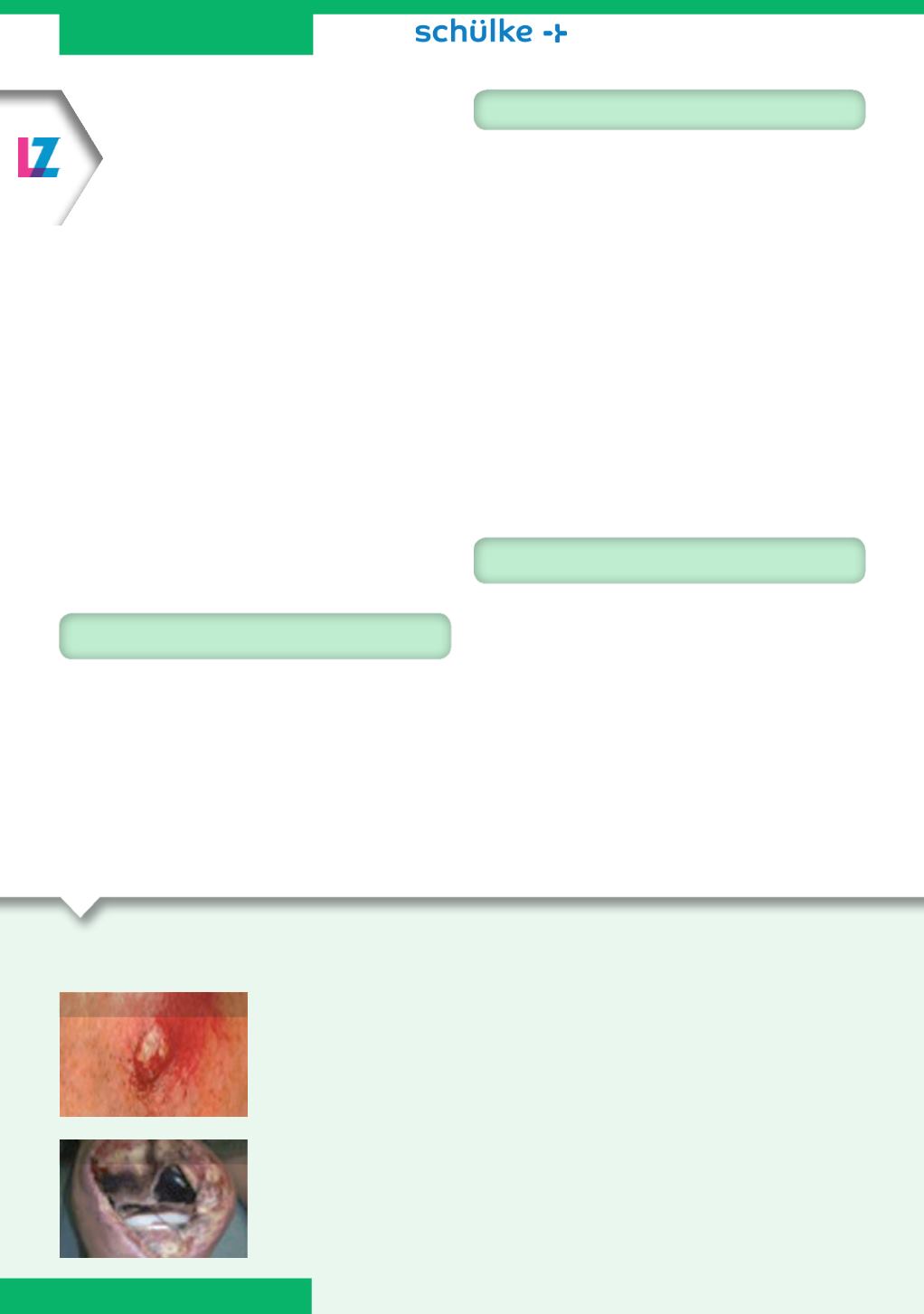
S
taphylococcus aureus
is a gram-positive bacterium
found on the skin and nasal carriage. Meticillin-
resistant
S. aureus
(MRSA) is a strain that has
developed antibiotic resistance and often occurs in
patients who have had direct or indirect contact with
hospitals, care homes or other healthcare facilities.
MRSA causes a variety of serious healthcare-associated
infections, including in wounds.
It is important for nurses to understand what
a healthcare-acquired infection is and to identify
the difference between hospital- and community-
acquired infections. Similarly, it is vital to be able to
determine how MRSA can be identified and managed.
This Learning Zone sought to equip nurses with the
knowledge to educate patients on their role in the
prevention of the spread of MRSA and to understand the
role of decolonisation products in the community.
Learning zone:
understanding
MRSA
Identifying the signs of MRSA infection
It is important that nurses are able to identify a patient with an MRSA infection and which type it is.
?
WHO IS MOST AT RISK?
A variety of people are at-risk from MRSA and it is
important that community nurses are aware of these
high-risk individuals:
Patients with a known history of MRSA
Patients from areas / facilities known to have a high
MRSA prevalence
Dialysis patients
Patients that have been hospitalised in the past
12 months
Patients who have come into contact with MRSA
carriers while hospitalised
Patients with chronic skin lesions (e.g. ulcers, chronic
wounds, deep soft tissue infection)
Patients in nursing care who are immobile, have
disrupted feeding or swallowing patterns, or who
are incontinent
Patients with a catheter in situ (e.g. urinary catheter,
PEG tube or tracheal cannula)
Patients who have received antibiotic therapy in the
past six months.
Healthcare-associated infections (HCAIs) can develop after
interventions such as medical or surgical treatment, or from
being in contact with the healthcare environment, such as
frommedical equipment.The term HCAI covers a wide
range of infections including MRSA, meticillin-sensitive
Staphylococcus aureus
(MSSA) and
Clostridium difficile
. HCAIs
are a serious risk to the health of patients, including those
with wounds, causing significant morbidity and mortality for
those infected. As a result, infection prevention and control is
a key priority for community nurses and other clinicians.
?
WHAT IS AN HCAI?
Appears as a small red bump pimple or boil
Skin area may be tender or swollen
Skin often becomes warm to the touch
Patient may begin to run a fever
Infections are often mild, but can become deeper and more serious.
Often begins as a skin or soft tissue infection around the site of a wound leading to
shortness of breath, fever, chills and often the development of an abscess. In severe
cases this can lead to:
Bloodstream infections
Pneumonia
Death.
If a community patient is identified as a carrier of MRSA,
a decolonisation procedure will be required before
admission to hospital or nursing home etc, to help avoid
further spread.
This will involve the patient performing few
important measures, including:
Using a prescribed antibacterial wash/shampoo,
usually for a period of five days
Using a prescribed nasal gel in conjunction with the
wash and shampoo
Changing clothes, bedding, pillowcases and towels
on a daily basis
Washing with single-use toiletries.
?
DECOLONISATION
JCN Roadshow
Sponsored by
14 JCN
2015
Skin and soft tissue
Invasive








